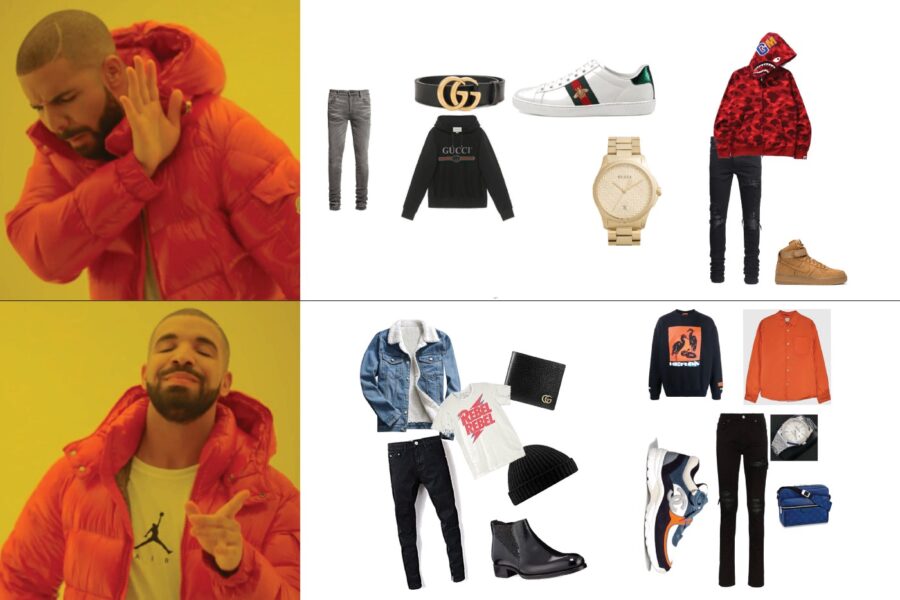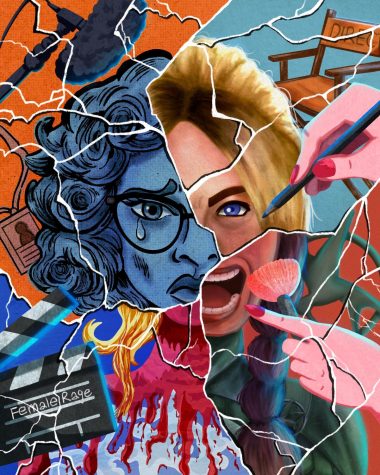Money Can’t Buy Style
Why you shouldn’t be so quick to bury a friend following the ASMR trend
Have you ever seen a teenager or young adult passing by wearing a Supreme t-shirt or some other high-end designer brand? There’s a good chance that they are a hypebeast: a consumer of trends, a buyer of popularity, a sucker for what’s new. They buy and wear whatever is “in” and then move onto the next thing once a fad goes out of style. Lately, high fashion has been at the forefront of street culture, ranging from the classic Louis Vuitton to the modern and progressive Off-White. Brands like these are the hottest things to have for the modern influencer.
But what does this mean about their sense of style? Absolute jack shit, that’s what.
Usually, these hypebeasts don’t know what they’re wearing or how to wear it, resulting in them looking like a complete buffoon with no sense of style. All they know is that the clothes that they own are expensive and fresh off the runway. Remember, just because you wear something expensive doesn’t make you a fashionista. And don’t think $1000 sneakers make the outfit any fresher. You just look like every other basic Instagram asshat with money.
A typical hype outfit is usually pretty basic: a tee, some jeans or other types of pants, a pair of sneakers, and some form of outerwear like a hoodie or flannel. But what makes the outfit desirable are the brands that the clothes are from. The names alone add hundreds of dollars to the value of the entire ensemble. Similar designs and looks can be found for much cheaper and give the same effect, but since the $25 camouflage tee from Target isn’t the same as the $100 one from Bape, hypebeasts don’t want it.
And don’t get me started on wearing big logos in excess. Brands that spam their logo all over their clothes are tacky and appalling. One of the largest offenders of this is Champion. They slap their big “C” logo all over shirts, hoodies, and pants. It looks awful. Champion isn’t even a high fashion brand, but people flex it like it is. But that’s a discussion for another time. Generally, the bigger and more frequent the logo, the worse it looks. Since it’s flashy and shows off the brand, of course, people are gonna want it.
There’s a whole lot more to dressing than the brand name that’s on your tee shirt. Colors, patterns, fit, and aesthetics all go into putting together an outfit that looks good. Not everyone has the same taste in clothing, so when people wear all the same designer clothes the same way, it makes streetwear more diluted.
What makes an outfit is the entire organization of the clothes, no matter where they are from. Don’t get me wrong; having designer clothing isn’t a bad thing. It’s perfectly fine if you want to rock a Gucci tee now and then. Just don’t ONLY wear designer. Shop from a variety of places that have things you like and are within your budget. There’s no shame in buying your jeans from PacSun if you can rock them. Simply put, be humble with your brands. Remember, if you look good, you feel good. And you’ll feel a lot better knowing you bought great looking clothes for prices that didn’t break the bank. The art of balling on a budget is an important skill to learn.
Coordination is key. Not all colors and patterns work with each other, so finding the right combinations is of utmost importance. And just like with branding, too much of either is a bad thing. Stick to a few colors and a pattern or two, and you’re good to go. Don’t wear a yellow and green Guess shirt with a black and red flannel; pick one piece and work around it. Otherwise, it’ll look like you have no idea what the fuck you’re doing.
In conclusion, don’t think that wearing a fit that costs as much as your tuition makes you stylish. Don’t be a hypebeast. Find clothes you like that don’t break the bank, and more importantly, make your style your own. Outfits are about self-expression after all. So go ahead, throw on that Givenchy hoodie and wear it proudly. But leave the Balmain jeans in your closet. Trust me. You’ll thank me later.










